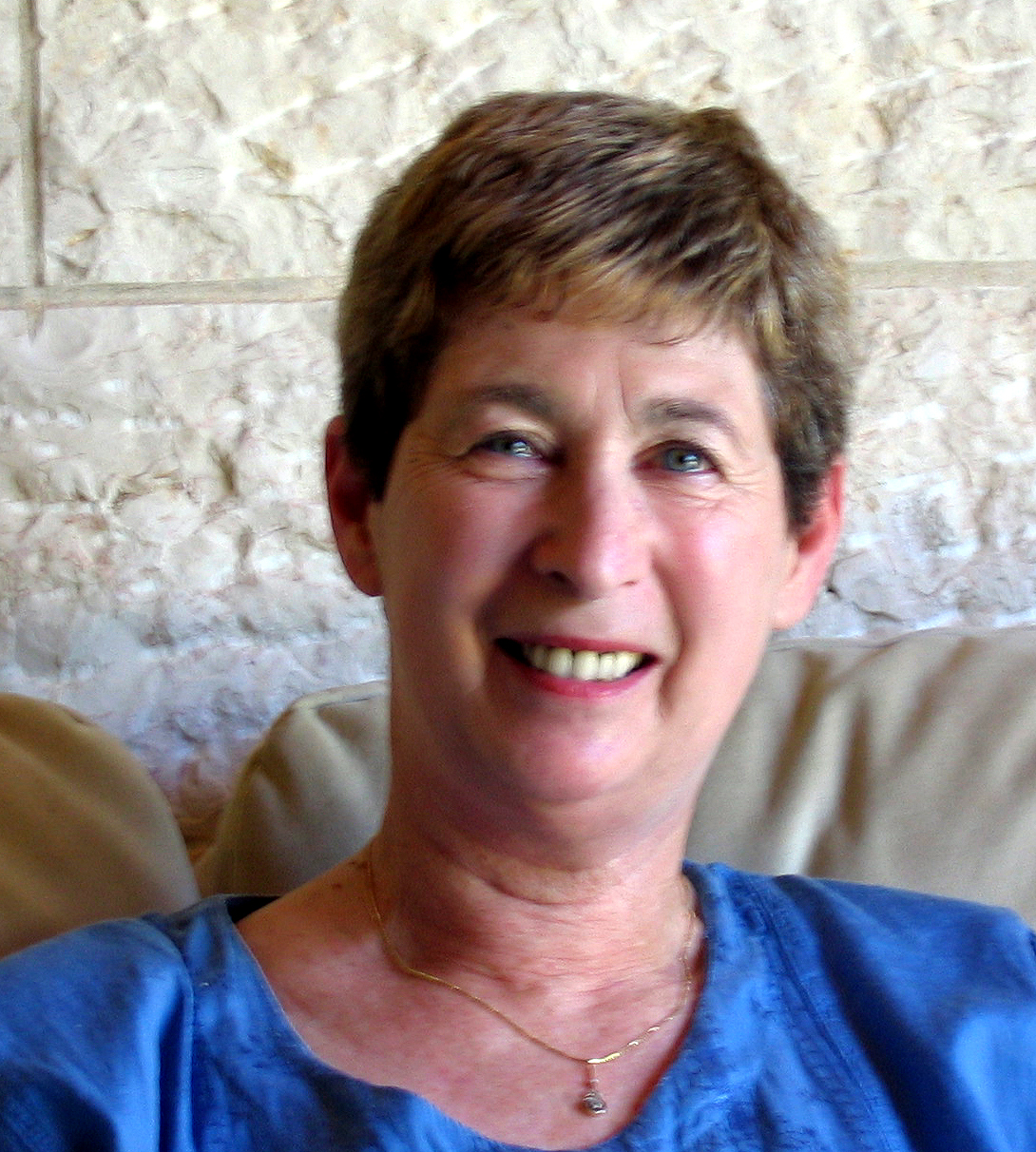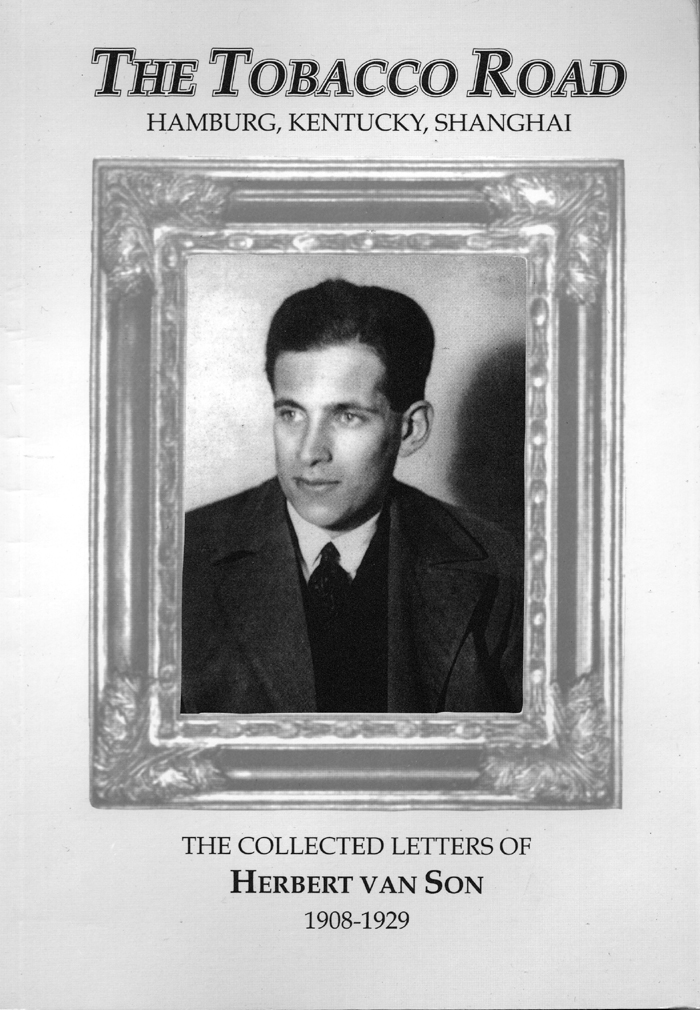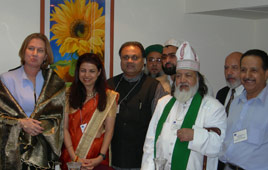
Please
click on the above ad to visit the
Humanistic Jewish Congregation's
website
|
Features |
The Jewish Grapevine  |
Steve Berger of Congregation Beth El is a new district director of the Federation of Jewish Men's Club, an auxiliary of the Conservative movement. Meanwhile, Phil Snyder of Tifereth Israel Synagogue has been named as a vice president for membership.
| SIMCHA—Myla Wingard and Dr. Lou Rosen celebrated their 11th wedding anniversary and the repainting of the interior of their house in Pacific Beach by inviting friends and neighbors over for a ceremony today affixing mezuzot to the doorposts of their rooms. Daughter Adira's room behind Myla is painted in "sassy lilac," one of a number of lively colors in which their rooms are now painted. Some others include "yellow sunshine," "nutmeg brown," "plum purple," and "spring water fall blue" and for son Eitan, a "chic" black and white. "People are affected by the colors—they say 'wow' because it makes you smile," Wingard explained. "Each color elicits a different kind of mood." |
|
Greater San Diego Area |
____________________  The Jewish Citizen The Jewish Citizen by Donald H. Harrison |
Joseph 'Chickie' Glickman so pleased with his stroke therapy, he builds clinics in Israel so others may benefit
SAN DIEGO —A 92-year-old philanthropist whose left side was paralyzed by a stroke seven years ago believes that the same techniques that enabled him to walk and to drive again not only can help fellow stroke sufferers in Israel but also can save the Israeli health care system hundreds of millions of dollars.
Through his family foundation, Joseph “Chickie” Glickman of La Jolla is helping to export what he describes as “a miracle.” He is putting up funds to help create physical therapy treatment clinics at senior centers in Tel Hashomer near Tel Aviv and Kiryat Bialik near Haifa. New techniques in physical therapy will benefit approximately 10 stroke patients per day per location, amounting to over 6,000 treatments per year under the pilot project.
Although there are a few outpatient clinics in Israel, said Glickman, this program would locate them at senior centers where seniors also receive meals, social activities, and a network of social services. Without these outpatient clinics, the alternative for many stroke and injury victims would be treatment for a week or a month at a time as patients in hospitals, a routine that is very expensive, restrictive and often less effective.
Joseph 'Chickie' Glickman rises from chair and walks
Glickman expressed his appreciation to an Iraqi-American occupational therapist, Waleed Al-Oboudi, who developed new physical therapy techniques for treatment of paralysis from a stroke or brain injury. He praised Dr. Arthur Lupsha, a Jewish doctor of physical therapy who learned these techniques from Al-Oboudi and has been applying them successfully in Glickman’s treatment.
For several years, Lupsha also has been teaching Al-Oboudi’s technique to Israeli physical therapists under a program financed by Glickman under auspices of the American Jewish Joint Distribution Committee (JDC).
Glickman was 85 years old when he suffered his stroke. He recalls being “rushed by paramedic ambulance to a hospital” where he was given “standard post-stroke treatment—rest, medication and rudimentary physical therapy to deal with paralysis.” After two weeks, he was transferred to another hospital for further rehabilitative therapy. He hired three nurses to provide around-the-clock private nursing services.
“After another two weeks, I was discharged as the therapy didn’t seem to be working for me,” Glickman recounted. “One doctor said I would never be able to stand up by myself because I had lost all sense of equilibrium. Not willing to settle for that, I started to look for a private physical therapist. One of my nurses had met with a therapist for a previous patient and thought this therapist was better than any of the therapists in the hospitals. We made an appointment with Arthur Lupsha and a miracle started to happen. (Jump to continuation)

{Click the above ad for more information
|
Sports |
 News from the Israel Baseball League |

CELEBRATION—The Bet Shemesh Blue Sox whoop it up after winning the championship of the Israel
Baseball League in its inaugural season. IBL photos by Yechiel Jonathan Stein
Bet Shemesh, always in first place, now are officially the inaugural year Israel Baseball League champions
By Andrew Wilson
PETACH TIKVA, Israel (Press Release)—The Bet Shemesh Blue Sox shut out the Modi'in Miracle, 3-0 today, to win the inaugural IBL Championship before 2,610 fans at Yarkon Field. The pitching match up of right handers Maximo Nelson of Modi'in and Rafael Bergstrom of Beth Shemesh lived up to expectations as, for the most part, both pitchers engaged in a classic pitchers duel. Bergstrom dominated the Miracle offense earning the victory, striking out eight batters and allowing no walks en route to the shutout.
Although Modi'in out hit Bet Shemesh, it was the Blue Sox who manufactured their runs throughout the night. Bet Shemesh jumped out on top in the bottom of the first inning on a sacrifice fly by outfielder Jason Rees, scoring outfielder Sean Slaughter from third base. The Blue Sox scored their second run in the fourth inning, on a sacrifice fly by first baseman Ben Pincus. They added their final run of the inaugural season in the fifth inning, when shortstop Gregg Raymundo (2-for-3) singled to drive in Sean Slaughter from second base.
Modi'in threatened in the top of the top of the sixth inning with runners on first and third base with two outs. However, Bergstrom struck out Adalberto Paulino (2-for-4) to end the inning.
Ron Blomberg's Blue Sox truly personified a championship team. Bet Shemesh never fell below first place throughout the entire season.
Following the game, Commissioner Dan Kurtzer presented the championship trophy to the entire Bet Shemesh team. Blomberg spoke during the trophy ceremony saying, "I've been in two World Series with the New York Yankees, and this championship lives
up to both." The Commissioner also presented the individual season achievement awards to the IBL's top players.
The IBL announced that the first game of the 2008 season will be played on Sunday, June 23, at 6 p.m. at the Yarkon Sports Complex in the Baptist Village in Petach Tikva.
Summaries:
1 2 3 4 5 6 7 8 9 R H E
Modi'in 0 0 0 0 0 0 0 0 0 0 5 2
Bet Shemesh 1 0 0 1 1 0 0 0 x 3 4 1
W: Rafael Bergstrom (1-0); L: Maximo Nelson (0-1); HR: None

PRESENTATION—Bet Shemesh Deputy Mayor Shalom Lerner handing the IBL Championship trophy
to Bet Shemesh Manager Ron Blomberg.
Rodriguez and Raymundo named first season's
most valuable players by Israel Baseball League
 PETACH TIKVA, Israel (Press Release)— Following the winning of the first Israel
PETACH TIKVA, Israel (Press Release)— Following the winning of the first Israel
Baseball League championship today by the Bet Shemesh Blue Sox, Commissioner Daniel Kurtzer has announced award winners as determined by league officials.
The Hank Greenberg Award for Most Valuable Player will be shared by Eladio
Rodriguez of Modi'in and Gregg Raymundo of Bet Shemesh. (Greenberg, a
Hall of Fame player in the Major Leagues, is considered the greatest Jewish hitter of all time).
The Commissioner's Award for Sportsmanship and Character goes to Aaron
Pribble (Tel Aviv) and Brendan Rubenstein (Ra'anana).
The Commissioner's Award for Distinguished Service goes to Eric Holtz of Bet Shemesh, a player/coach with the team who also filled in as a player/manager during the course of the season. The award for best pitcher goes to Juan Feliciano of Bet Shemesh.
The award for Most Valuable Israeli player goes to Dan Rothem of Tel Aviv.
(Both his hometown and his team).
Nokona, a league sponsor presents three defensive awards: best outfielder: a tie between Josh Doane (Netanya) and Jason Rees (Bet Shemesh); best infielder: a tie between Nate Fish (Tel Aviv) and Hector De Los Santos (Netanya); and best catcher: Eladio Rodriguez (Modi'in).
The league's batting champion in its first year was Eladio Rodriguez, who hit .461 in the regular season. The home run champion was Jason Rees with 17. Aaron Pribble won the league's ERA title, 1.94.
Full season statistics are available at www.israelbaseballleague.com.
The Israel Baseball League is the first professional baseball league in the Middle East. Players from nine nations, including a dozen Israeli players, competed in the league's initial season. The first tryouts for the 2008 season were held today in Hinsdale, Massachusetts, at the Dan Duquette Sports Academy.
The final regular season standings:
W L % GB
Bet Shemesh Blue Sox 29 12 .707 -
Tel Aviv Lightning 26 14 .650 2.5
Modi'in Miracle 22 19 .537 7.0
Netanya Tigers 19 21 .475 9.0
Ra'anana Express 17 24 .415 12.5
Petach Tikva Pioneers 9 32 .220 20.0

{Marc Kligman, who combines being a sports agent with his life as an observant Jew, invites you to listen. Click on the ad above for more information}.
|
Arts & Entertainment |
 Arts in Review
by Carol Davis |
Starlight's Beauty and the Beast a real beauty
SAN DIEGO—The very first time I saw Beauty And The Beast was when it came through San Diego as a national touring show some years ago. I took my youngest grandson, Gil, to see it with me. I could have saved the theatre the trouble of an extra ticket, since he never sat down once. Now he’s on to Shakespeare, but that’s another story for another time.
Starlight Musical Theatre is presenting, as its third offering of summer fare under the stars, this Tony Award winning show, which ran on Broadway for thirteen years just ending in July of this year. With music by Jewish-American Broadway and film composer Alan Menken, lyrics by Howard Ashman and Tim Rice and book by Linda Woolverton, it made its Broadway premiere in April of ’94. Based on the Disney animated film, it has all the right ingredients to capture the hearts of young and old alike. Starlight’s current production of Beauty and the Beast does just that.
Under the careful direction of artistic director and executive producer Brian Wells, and the baton of Parmer Fuller, musical director and conductor, the story of Bell (Ashley Anne Zahnlecker) a beautiful young woman sought after and perused by local cad Gaston (Randall Dodge), her journey of beastly cordiality and finally love begins when her father, Maurice (Jim Chovick), an absent minded inventor, gets lost in the mystifying forest that lies just beyond the outskirts of her little French village.
Unbeknownst to those living in the Provencal, there is a castle hidden deep in the woods where, years earlier, a Prince who had not been very Princely turned a beggar woman away from the castle when she asked for shelter. Before she is sent away, she handed him a rose which not only revealed her beauty, but cast an evil spell on the Prince, turning him into a Beast; his servants into morphed household items and his castle, a cold and uninviting prison. The curse, we find, can only be broken when the Beast learns to love and is loved in return. This must happen before all the petals from the rose, which is sealed in a glass jar, fall from its stem.

THE BULLY AND THE BEAUTY—Randall Dodge as Gaston tries to force Belle (Ashley Anne Zahnlecker)
to be his wife, luckily to no avail, in Beauty and the Beast at the Starlight Theatre
Back in the village, Gaston tries every means including manhandling Bell to convince her to marry him. Randall Dodge recreates the role as the conceited bully that garnered him a Best Actor Award for Featured Performance from the San Diego Theatre Critics Circle in Moonlight’s production in 2005. He fits the role to a tee, strutting across the stage, flirting with the audience, flexing his muscles and just plain being obnoxious and loathsome, as he offers an absurd proposal of marriage to Belle, who quickly turns him down.
While Dodge is a talented actor with so much versatility and can be seen in many local musical venues throughout Southern California, the role of Gaston really belongs to him. He’s the guy you love to hate for his larger-than-life ego. Yet he’s so ridiculous, that it’s fun watching him. Ashley Anne Zahnlecker is charming as Belle, the real heroine of this story. She was in fine voice on opening night and needless to say everyone was rooting for her to tame the Beast (Luke Adams) and rid herself of Gaston. Fortunately for both, they make the romance believable (beast and beauty) appealing and credible. Zahnlecker’s stage presence is easy and likable.
As the Beast, Luke Adams never overplayed his role and was able to bring out a certain empathy for his split personality. Unfortunately, he was less appealing or convincing as the ‘handsome’ Prince, hampered by a very unflattering wig and uncomfortable role switch. The transition from Beast to Prince, always a challenge when the beast dies and becomes the Prince happened without a hitch. Jim Chovick, who is making his Starlight Musical Theatre debut, is right on as Maurice, the bumbling, tinkering and loveable father.
The dancing silverware and other household items, signatures of the show, are always fun to watch especially Jim Chatham’s Lumiere the candelabra, whose lights are ready to extinguish any moment and Linda Libby’s Mrs. Potts, the larger than life tea pot and cup and her son, Chip (Tommy Twomey whose face can be seen inside the teacup) whom she pulls around in a tea wagon are right on target.
Paul James Kruse’s Cogsworth, the clock and head of the household, is on solid ground as well. They all know that if the Beast finds true love the curse will be broken and they can resume their natural places in the castle. They try their utmost to make sure the Beast is on his very best behavior at all times, difficult as it proves to be, since he’s well, a beast.
Their “Be Our Guest” song and dance number, one of the more clever ones in the show, proved to be both lively and fun. The more familiar theme song, Beauty and the Beast, sung by Kate Wilson as Madame de la Gran Bouche is, as to be expected, beautiful. Jennifer Leigh Wheeler and Summer Jones choreographed, and with the help of a large and talented Starlight cast, once again, proves to be a viable summer choice. Eric Lotze’s lighting, scenery with costumes provided by ZFX, Inc and with help from Sparks Moeller in the costume department, the overall look and enjoyment of this production, no matter how many times you’ve seen it, is still worth another look.
Composer/lyricist Menken, who is no stranger to collaborating with other artists, worked on several Disney features such as Little Mermaid, Pocahontas, and Aladdin. His first successful work was in the off Broadway musical, Little Shop of Horrors in 1982. He’s won eight Academy Awards so far and he’s only 58. In 1994 he won the Tony for Best Original Score for this show.
Beauty and the Beast will continue through Aug. 26. It’s worth a trip to the park. Go early, bring a picnic, blankets, your imaginations and all the kids you know.
For more information log on to www.starlighttheatre.org.
See you at the theatre.
 A Herald in Zion.... Notes from Mevasseret Zion Dorothea Shefer-Vanson |
Editor tells back story of book on adventurous uncle
MEVASSERET ZION, Israel —I first came across the file of my uncle’s letters about ten years ago, when I was looking through my father’s filing cabinet for documents to help me with the book I was writing about the history of the family. All I knew about my parents’ families was from faded photographs and the little my parents had told me and my sisters. In an old ring-binder, with holes punched in each neatly filed page, was a mass of letters, some handwritten, some typed (fortunately, most were in the latter category). At the time my German was barely enough to make out a few words here and there.
 I was burning with curiosity to find out what the letters contained. All I knew about my uncle was that he had been ten years older than my father, that he had been clever and witty and handsome, and had gone to America in the 1920s to learn the tobacco trade. The intention had been that he would later return to Hamburg and enter the family business. But that had never happened. Somehow, he had gone from there to Shanghai, where he had mysteriously disappeared. It was not a subject to be talked about.
I was burning with curiosity to find out what the letters contained. All I knew about my uncle was that he had been ten years older than my father, that he had been clever and witty and handsome, and had gone to America in the 1920s to learn the tobacco trade. The intention had been that he would later return to Hamburg and enter the family business. But that had never happened. Somehow, he had gone from there to Shanghai, where he had mysteriously disappeared. It was not a subject to be talked about.
By the time I came across the file of letters my parents had moved to Israel, where my sisters and I lived. The letters, together with other old files of family documents and correspondence, as well as several photograph albums, had ‘made aliya’ together with my parents in 1984, after languishing in some forgotten cupboard for the 45 years that had passed since my parents had left Germany. In fact, these were the sole remnants of the homes and families my parents had left behind in 1938.
The first thing was to get the letters translated. I friend of mine in Jerusalem worked as a translator from German into Hebrew. I worked as a translator from Hebrew to English. It seemed a somewhat roundabout way to set about getting access to the material, but it suited our needs and abilities at the time. Each month my friend gave me some pages in Hebrew, and I translated them into English. My father paid for the translation into Hebrew, and my friend had a meager source of income for a few months.
As time went on, and the voice behind the letters emerged, the story became more and more fascinating. Here was a young man, not yet 20, embarking on a great adventure, living and working in the tobacco factories and fields of Kentucky and Louisiana in 1928 and 1929, learning about life in small-town America, thrilled by all the new things he was learning, yet yearning for the friends, family and metropolis he had left behind.
The young man comes across as sometimes arrogant (especially about American girls), sometimes enthusiastic about places and people, and sometimes overcome with homesickness. The letters are full of humorous—often sardonic—remarks about everyone and everything. The things and people Herbert wrote about—the Friday night family gatherings at his grandparents’ home, the discussions about literature and politics with his cousins, his mother’s cooking and baking—provide a vivid picture of the vibrant society and culture which constituted German-Jewish society in the 1920s. In fact, it provides a perfect portrait of the world that Hitler destroyed.
After I had translated all the letters, I left them untouched for several years, not knowing what to do with them. I knew that trying to get a commercial publisher to take them was well-nigh impossible. Besides, I was busy with other projects—I was writing a book of my own, I was trying to find a publisher for another manuscript of mine, I had a full-time job. It was too much. But all those years I kept up my German lessons, simply because I felt I needed to know the language of my family, the mother-tongue I could not speak.
Then about a year ago I felt the time was right. My mastery of German was good enough to enable me to compare the German originals with my English version. My friend had done a marvellous job, but she had sometimes missed the meaning of a phrase because she was not familiar with the Hamburg context. I decided that the references to people and places and books in the letters would need explanatory notes if the book was ever to mean anything to a reader who was not a member of the immediate family. My father, by then in his eighties, was able to help me get facts and relationships sorted out. Although he couldn’t always remember who he had seen the day before, he had an excellent memory for the people and places of sixty years ago. He knew just how each cousin was related to him, who each one had married, and the names of their parents and children. The picture of a warm and loving extended family, of the social, cultural, and welfare activities of the Hamburg Jewish community became clearer.
The awful truth of what had happened to the young man who had set out for America with so much hope and optimism also came to light. He had been so successful as a trainee that the American tobacco company had offered him the post of manager of their Shanghai office. He had accepted, on condition he was allowed to travel via Hamburg and visit his family, if only briefly. His last letters are full of eager anticipation of the happy reunion with his loved ones.
What precisely happened next is still a mystery. My father was a boy of 13 at the time and the truth was kept from him. He found out many years later that his brother had committed suicide in Shanghai, shortly after arriving there. He knew there had been a newspaper report of it, but it was not in any of the files in his cabinet.
I had heard of the British Newspaper Library situated in a north London suburb, not far from where I had grown up. When I was next in London I made a trip to Stanmore, and tracked down the English language newspaper, The North China Herald, that had been published at the time. I went through the papers that had appeared in Shanghai in May 1929. As I went through the microfiche pages, I got a picture of a thriving ex-pat society, with amateur dramatics, golf and racing, and a giddy social round. Then the headline jumped out at me “Tragedy in a Bathroom; Young Foreigner Found Dead: Suggested Suicide.” That was it! My head swam, and my sudden intake of breath caused heads around me to swivel. The newspaper account was graphic, too graphic. There must have been a lot of blood.
The file of my uncle’s letters ended with the correspondence between his father and the Shanghai Chevra Kadisha concerning the gravestone. Naturally, at that time there had been no question of bodies being sent for burial in Europe or of relatives going to China for the funeral. The local burial society was charged with attending to all the details of the burial in accordance with the requirements of the Jewish religion. I translated those letters too, and decided to publish the volume myself, as my own tribute to my uncle, my family, and the world that had been lost to us all.
The book doesn’t have anything directly to do with the Holocaust, yet it serves as a poignant reminder of the world that existed before that cataclysmic event. Many of the people who feature so vividly in the pages of the letters met their deaths in the concentration camps, while others were scattered to the four corners of the earth in the attempt to save themselves. What had once been a thriving, tightly-knit community was no more. But the documentary evidence of the letters remains, providing a vibrant testimony of those lives and times
The Tobacco Road
can be purchased for $10 U.S. from Dorothea Shefer-Vanson, P.O.B. 736, Mevasseret Zion 90805, Israel.
. 
NAPOLEON "You're not hiding your report card? Show me! Take your hand out of your jacket and show me!" MONA LISA: "After all the money your father and I spent on braces, this you call a smile?" CHRISTOPHER COLUMBUS: "I don't care what you've discovered, you didn't call, you didn't write." MICHELANGELO: "A ceiling you paint? Not good enough for you the walls, like the other children? Do you know how hard it is to get that schmutz off the ceiling?" ABRAHAM LINCOLN: "Again with that hat! Why can't you wear a baseball cap like the other kids?" GEORGE WASHINGTON: "Next time I catch you throwing money across the river , you can kiss your allowance good-bye! THOMAS EDISON: "Okay, so I'm proud that you invented the electric light bulb. Now turn it off already and go to sleep!" PAUL REVERE: "I don't care where you think you have to go, young man, midnight is long past your bedtime!" ALBERT EINSTEIN: "Your senior photograph and you couldn't have done something with your hair?" MOSES: "Desert, schmesert!! Where have you really been for the last forty years?" BILL GATES: "It would have killed you to become a doctor?" BILL CLINTON: "Well, at least she was a nice Jewish girl, that Monica
- -Thanks to Larry Gorfine of San Diego for passing this on!. |
|
Story Continuations |
Stroke Therapy...
“Not only am I standing, I am walking. And not only can I walk without a walker, I just need a cane. I even got my driving license back after taking a driving test."
The Neuro IFRAH technique
Lupsha said whereas all physical therapists prescribe a course of exercise for their patients, sometimes the exercise is too general to do much good for resolving a patient’s specific problem. Using Al-Oboudi’s approach known as Neuro-IFRAH (Integrated Functional Rehabilitation And Habilitation), “I am able to assess my patients, analyze their functional limitations, their underlying impairments and provide therapeutic activities that address those specific impairments.” This approach contrasts with that used by some therapists of “walking into a gym, looking around at the equipment and deciding what shall I do today with this patient to pass the next 45 minutes,” Lupsha said.
Arthur Lupsha
Until he studied with Al-Oboudi, “I used to think that doing exercise was enough to help my patients get better,” Lupsha said. “What I learned from Waleed—as he says—is that ‘a specific therapy leads to specific results, non-specific therapy leads to non-specific results. And if we are not specific in what we are doing with the patient, then there is no certainty of the outcome, unlike when you really start treating specific impairments and targeting them and gong after that problem, whatever it may be, whether it is a lack of range of motion… learning how to initiate movement… teaching the patient to use that arm or leg.”
What is the difference in the approaches? “Ultimately there is a system that Waleed developed, and using our basic knowledge of anatomy, kinesiology, biomechanics, you are able to look at the body and very quickly identify what are the missing components,” Lupsha responded. “We have an understanding of the body and how it should work normally. So when you understand movements of the body, and normal activities of those muscles, it becomes very easy to find what is missing and what is not working. So we analyze it through observing movement…through having patients attempt certain movements, certain activities, walking, and then you see where the deficits are and what is going on…”
If such observation indicates that a muscle “is not firing appropriately, you are able to go in and immediately target that muscle group and teach the muscles how to work, how to fire.... The issue after a stroke or brain injury isn’t that your muscles are suddenly weak… What happens is that there is an interruption of the signal from the brain to the muscle…. There is a problem with sending signals or what we call ‘recruitment’ so that the brain is able to recruit the right muscle groups with the right level of intensity, with the right amount of force, the right coordination, the right smoothness ….”
The next step in the therapy process is to use biofeedback techniques, Lupsha explained. “We will set up tools, or activities, for the patients, where they realize that by pushing their arm in a certain way, a ball moves or a teeter totter goes up and down or a flag will wave, and the more pressure they can create, the larger the range of motion they might have as an effect of their movement. So we will use a lot of ideas like that in our treatment and therapies to help them initiate muscle movements in their first place, and then we will work in refining those muscle movements, for speed, coordination, how smooth those contractions are, the ability to sustain those contractions over a period of time or with repetition.”
The Israel experience
Glickman recalled that during the course of his treatment, Lupsha was “just completing his work on a doctoral degree in physical therapy that would enable him to teach these very advanced techniques.” The two discussed Lupsha’s interest in someday teaching the techniques overseas. “My response was that if the course was taught in Israel and if we could look forward to the possibility of opening some clinics for this new and physical therapy, I would pay all the costs,” Glickman said.
The philanthropist arranged for him to meet Tali Tzuk, who handles for the American Jewish Joint Distribution Committee the development of programs to benefit seniors in Israel.
“She helped organize the first course three years ago,” Lupsha said. “That was a certification course, 98-hours training for Israeli therapists in the Neuro-IFRAH approach. The reception for that course was so overwhelming we went back a second year, and now a third year.”
Israelis at first were quite skeptical, Lupsha recalled.
“My colleague and I walked into this classroom with 24 physical and occupational therapists sitting there, half of whom have probably been practicing therapy longer than I’ve been alive… They had never heard of the technique before and had deeply ingrained ideas of what should be done with patients. What we found out time after time was that especially when we started treating patients in front of them, and they saw the changes that were possible in a very short time using this approach, we won them over.”
From the training sessions came the realization that outpatient therapy could be linked to services already offered at Israeli senior centers throughout the country. “The ‘miracle’ almost seemed to have an unstoppable life of its own,” Glickman said.
At the centers, seniors “were receiving many services—social, psychological, but not medical—and it would be a beautiful partnership to pair these physical therapy rehabilitation services with the social services and psychological services already at the senior centers,” Lupsha said. “So building off Mr. Glickman’s initial vision, we now have partnerships being created with the health care system, the ministry of health, and social services to develop these clinics.”
Glickman described the way the “miracle” eventually spread: “The government of Israel, through the JDC, asked us if we would set up clinics in all the existing government senior centers throughout Israel—about 100 of them. They liked the idea of serving their citizens outside of their overcrowded and costly hospitals. We liked the idea of bringing the newest, most advanced, and most effective physical therapy techniques to all Israelis.
“It looks like we will be able to work out all the details to the satisfaction of the enormous bureaucracy existing in modern-day Israel. We have agreed to pay all the operating costs for the first two clinics (in Kiryat Bialik and Tel Hashomer). Assuming these two pilot-program clinics are successful, the government and their socialized HMO’s will take over the financing of all future clinics. Everybody should be happy—the government will save about $100 million dollars a year in hospital costs, the patients would receive much better therapy treatment and with the comfort of not having to be confined to a hospital…”
* *
“Why do I want to do it?" Glickman asked rhetorically. "I admire Israel so much. There is no way that we in the Diaspora, can ever repay them for fighting for us every day.
“I respect Israel, I admire Israel, I love Israel,” he said.

 FM
Livni explained to the delegation about Israel's
three-sphere strategy. The first sphere represents the
bilateral process between Israel and the Palestinians –
Israel is interested in working with the moderates,
headed by Abu Mazen and Fayyad's government, and to step
up the delegitimization of Hamas. The second sphere
includes the wider Arab and
FM
Livni explained to the delegation about Israel's
three-sphere strategy. The first sphere represents the
bilateral process between Israel and the Palestinians –
Israel is interested in working with the moderates,
headed by Abu Mazen and Fayyad's government, and to step
up the delegitimization of Hamas. The second sphere
includes the wider Arab and 






